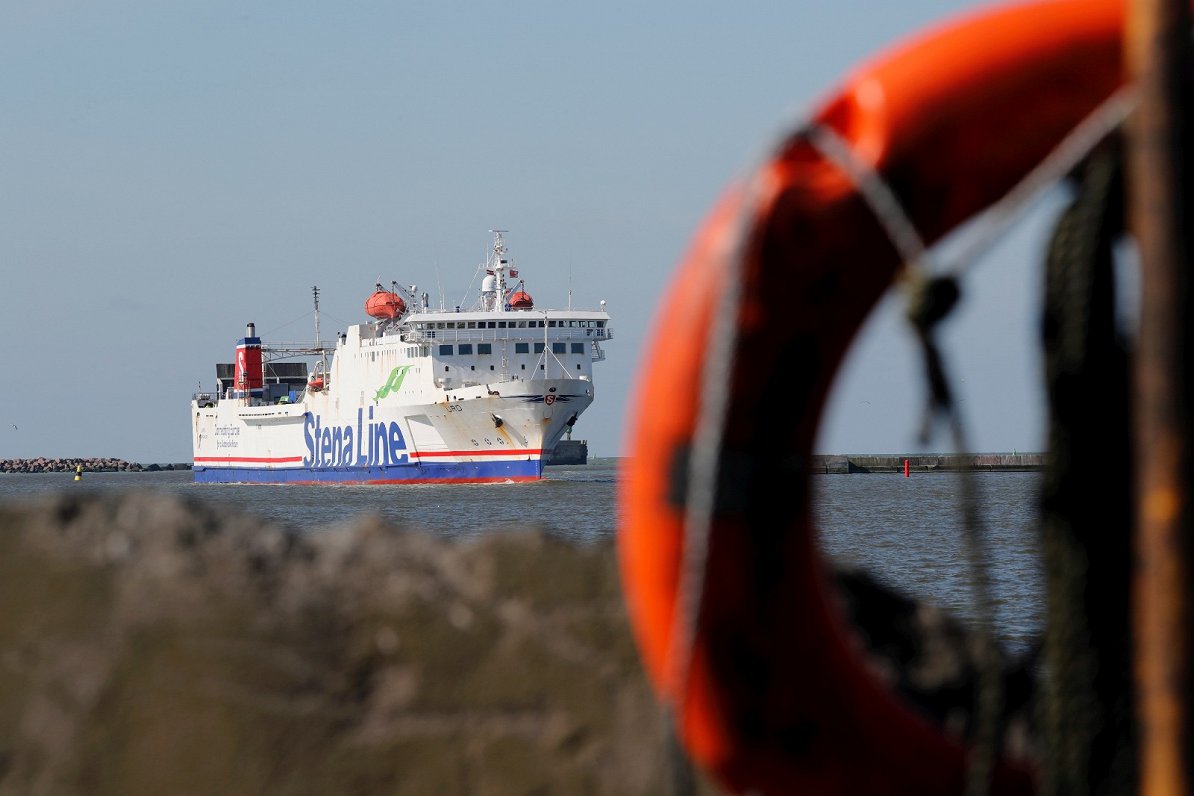While the route is primarily used for cargo, with trucks and their drivers able to roll on and roll off at each end, the ferries also serve passengers on the 24-hour crossing of the Baltic Sea.
The first four months of this year have shown that the volume of transshipped cargo in the port of Liepāja is up compared to the previous year, said Jānis Lapiņš, the manager of the Liepāja Special Economic Zone (SEZ). One of the reasons is ferry transport.
"For several years now, the company Stena Line has been providing regular ferry transportation. There has been an increase in cargo. At the moment we are talking about a stable flow of goods and a stable flow of ferries. This is already a serious route with two permanent ferries," said Lapiņš, adding that Liepāja SEZ and stevedoring company "Terrabalt" are cooperating to accommodate larger and faster ferries, which will be able to get to Germany in less than twenty hours.
In April 2021, 639,783.14 tonnes of various cargoes were handled in the port of Liepaja, chiefly grain, construction materials, wood products and fertilizers. From January to April, a total of 526 ships and 10,630 passengers were served in the port of Liepaja.
According to Lapiņš, a wide range of cargo is suitable for ferry transport.
"For example, new cars, which are transported in large quantities directly on this line, also a lot of so-called project cargo - complex, bulky equipment which continues its journey onwards even for Central Asia, where it is used in agriculture, road construction. The supply chain with the number of participants involved is growing. There are also companies that specialize in oversized cargo transportation. There are a lot of parties involved," said Lapiņš.
The new ferries will be at least 40–50% more spacious, according to Āris Ozoliņš, a member of the board of the port stevedoring company Terrabalt.
"If the ferry currently runs for 27 hours, then now it will be 19 hours, which is significantly faster. If it is currently five times a week, then it will be six times a week,” Ozoliņš told Latvian Radio. According to him, infrastructure upgrades at the port have played an important role in the expansion.
"This is joint work done by Terrabalt and Liepāja SEZ, we initially arranged the infrastructure. We ourselves have invested more than half a million in reconstruction, especially so that the movement of the cars can take place here, because we had entry and exit in one direction. SEZ also made its investments, arranged access roads, ”Ozoliņš said.
Meanwhile, the stevedoring company Terrabalt is not yet publicly disclosing any specific investment projects planned for the future, but it is known that work in the direction of development will continue.
In April Stena Line announced that a new ferry, the 186-meter-long Stena Livia would join the Stena Flavia ferry on the Nynashamn-Ventspils route but then switch to the Travemunde-Liepāja route later in the year, increasing the capacity on this route by 40%.
Stena Livia was built in 2008 at the Italian shipyard Cantieri Navale Visentini. It is a modern RoPax ferry that can accommodate 750 passengers, 200 cars and 115 trucks.
"At present, they form an important part of the European logistics network, connecting the Baltic States, Russia and the CIS countries with Germany and Sweden, as well as with the rest of Europe," Stena Line said.
"We see that customer demand in the Baltic Sea region is growing. We are currently strengthening our position and offer to customers, supplementing it in 2021 with modern ferries, which provide more capacity and a pleasant time on board on both routes to Latvia and back. We are happy to welcome Stena Livia to the Baltic Sea Fleet,” said Johan Edelman, Sales Director for the Northern Baltic Region.
With the Stena Livia and Stena Flavia running on the route Travemunde-Liepāja route twelve times per week (six departures in each direction) cargo capacity will rise by 40% and shorten the journey time from 27 to 20 hours. The new ferries will also offer improved amenities and more cabins to make the route a more attractive choice for both transport and travel destinations in the Baltic States and Germany.
Nor is Ventspils the only Latvian port with the potential for significant growth. Later this year, two large, modern RoPax ferries - Stena Scandica and Stena Baltica - will start operating on the route from Ventspils to Nynashamn in Sweden, increasing the cargo capacity by 30%.






























